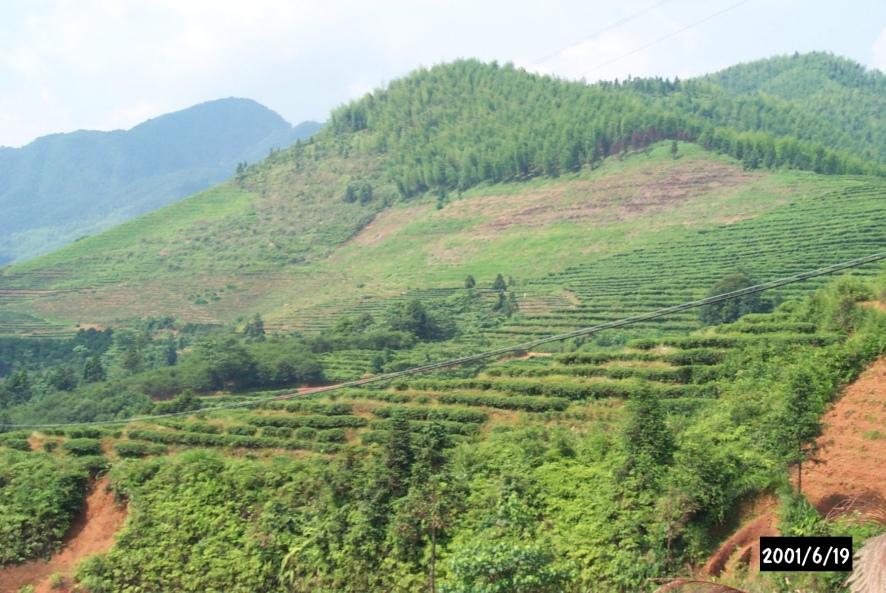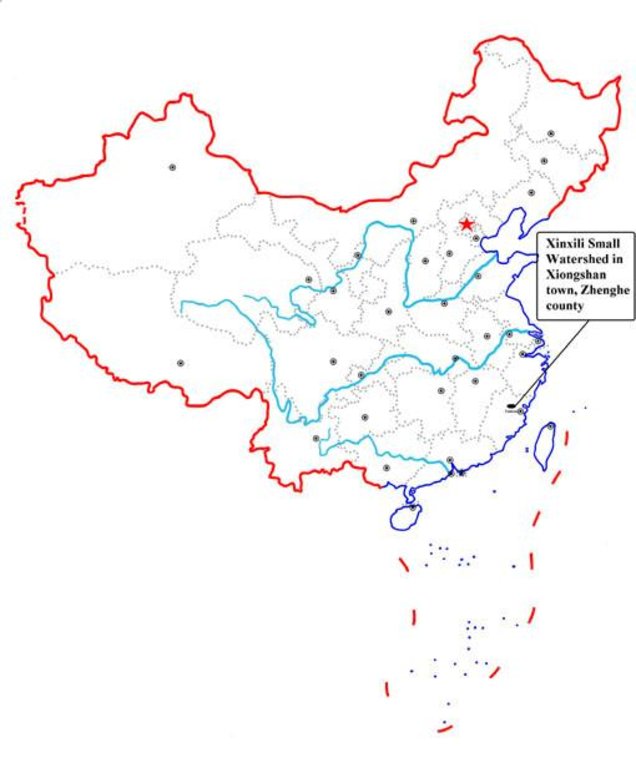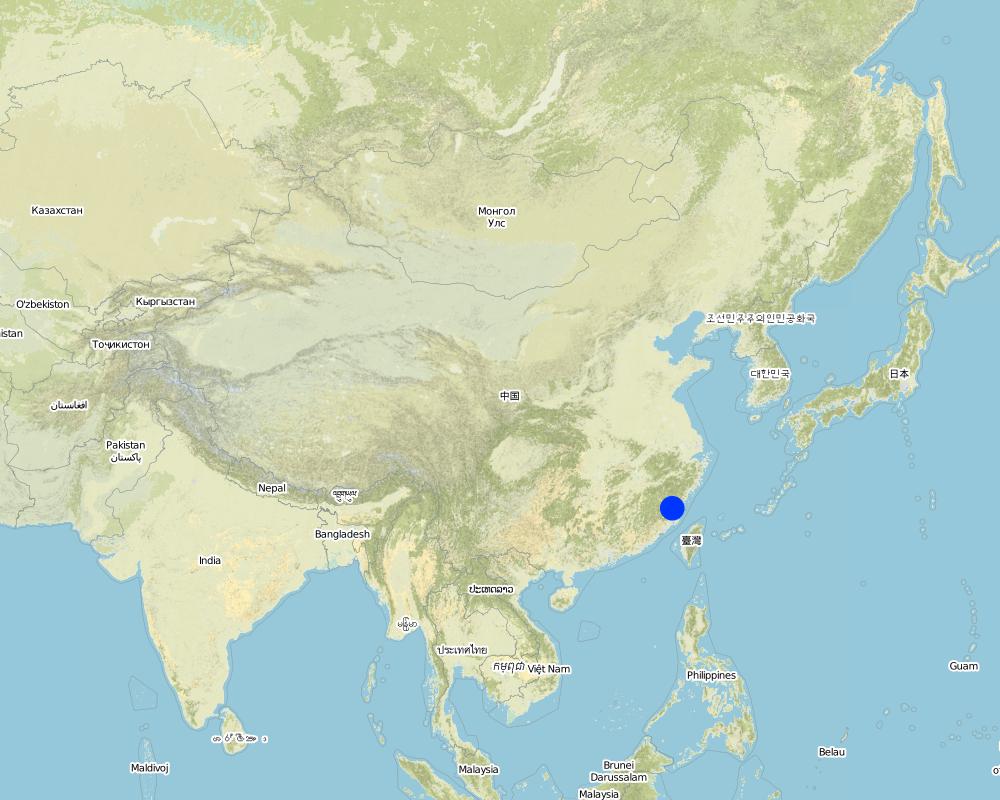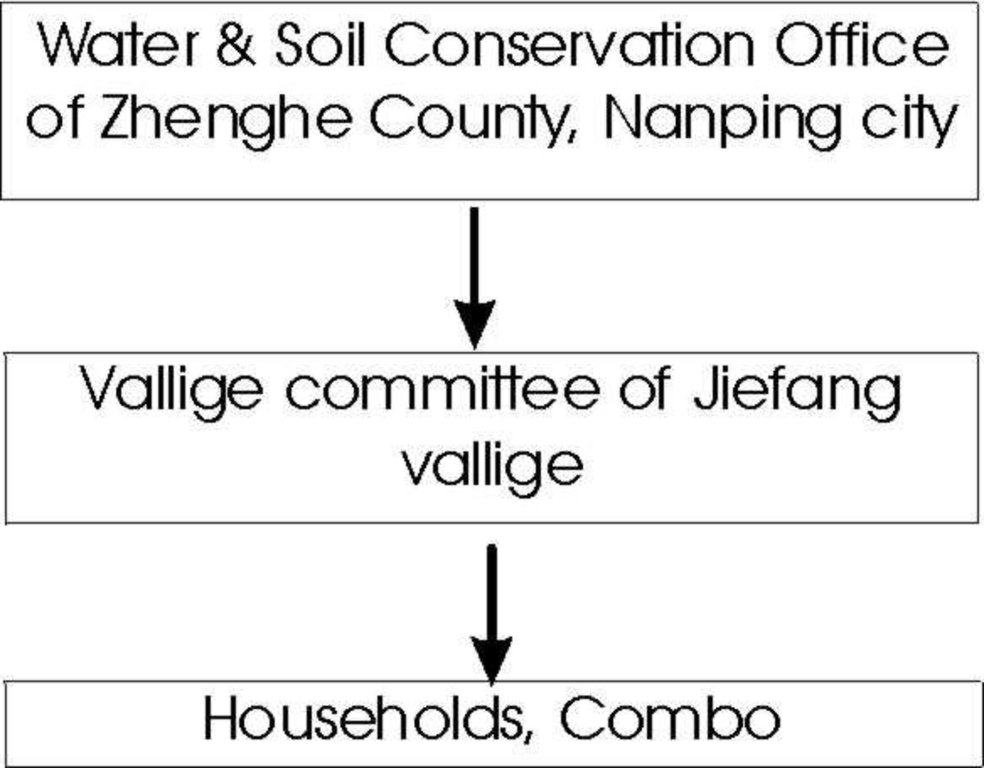Comprehensive Development & Management of a Small Watershed [China]
- Creation:
- Update:
- Compiler: Unknown User
- Editor: –
- Reviewer: Laura Ebneter
approaches_2408 - China
View sections
Expand all Collapse all1. General information
1.2 Contact details of resource persons and institutions involved in the assessment and documentation of the Approach
Key resource person(s)
SLM specialist:
Ye Ling
86-599-3322411
SWC Office of Zhenghe County
Zhenghe 353600, Fujian
China
Name of the institution(s) which facilitated the documentation/ evaluation of the Approach (if relevant)
SWC Office of Zhenghe County - China1.3 Conditions regarding the use of data documented through WOCAT
The compiler and key resource person(s) accept the conditions regarding the use of data documented through WOCAT:
Ja
1.4 Reference(s) to Questionnaire(s) on SLM Technologies
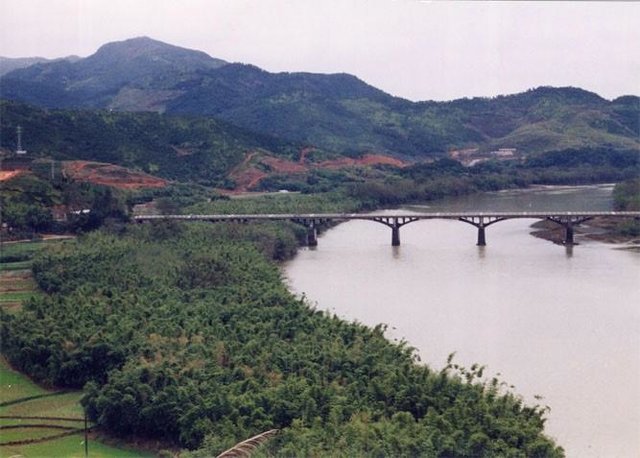
Comprehensive Development & Management of a Small Watershed [China]
The comprehensive measures including interplanting & intercropping are applied in the small watershed to control soil and water loss and improve integrated production.
- Compiler: Unknown User
2. Description of the SLM Approach
2.1 Short description of the Approach
The comprehensive measures including interplanting & intercropping are applied in the small watershed to control soil and water loss and improve land production and farmers' income.
2.2 Detailed description of the Approach
Detailed description of the Approach:
On the basis of the local national conditions and soil and water loss, the comprehensive SWC measures were adopted to pursue the targets including: 100% control of the soil and water loss; Ground cover rate up to 90%, among them forest cover rate reaches 85%; Adjusting agricultural structure to increase the local farmers' income of US Dollar 39337 by the end of the project implementation; Improving sluice ability in the basin. 5. Solving the problems of energy source in countryside.
The implementation stages of the project: 1990--1996: Planting trees including fruit trees. 1992--1994: preparing and programming. 1995: Initiating the program including a. planting vegetation of 461 ha; b intercropping area of 26.5 ha; c. building 2.5 km road and a water dam. 1996: a. closing mountain area 224.1 ha; b. Changing 3.3 ha of farmland to afforest; c. building a 2 km road. The Zhenghe county division of SWC took charge in preparation, programming and guidance.
2.3 Photos of the Approach
2.5 Country/ region/ locations where the Approach has been applied
Country:
China
Region/ State/ Province:
Fujian
Map
×2.6 Dates of initiation and termination of the Approach
Indicate year of initiation:
1990
Year of termination (if Approach is no longer applied):
1996
2.7 Type of Approach
- project/ programme based
2.8 Main aims/ objectives of the Approach
In principle, the local farmers play main role in the SWC project and government give proper subsidy. Aiming to solve the problems of water loss and serious soil erosion, frequent natural disaster in the watershed. Considering the desire of the peasants' increasing income, comprehensive development of mountain, water, forest and farmland in the basin.
The SLM Approach addressed the following problems: Disafforestation and irrational land use led to the disasters such as flooding and land degradation, e.g.. The floods of '5.21' in 1988 and '7.22' in 1989 which caused much loss; the drought disaster in 1990 resulted in loss of 23'614 US dollars. The disasters affect the agricultural production and people's life.
2.9 Conditions enabling or hindering implementation of the Technology/ Technologies applied under the Approach
availability/ access to financial resources and services
- hindering
financial crisis in the county, lack of capital
Treatment through the SLM Approach: Government support and peasants raise fund by themselves
legal framework (land tenure, land and water use rights)
- enabling
The existing land ownership, land use rights / water rights greatly helped the approach implementation: Because most of the mountain lands and forest belong to community, it is convenient for the management and development with large scale.
3. Participation and roles of stakeholders involved
3.1 Stakeholders involved in the Approach and their roles
- local land users/ local communities
Working land users were mainly men (Men bear main labor.)
- local government
SWC Office of Zhenghe County
3.2 Involvement of local land users/ local communities in the different phases of the Approach
| Involvement of local land users/ local communities | Specify who was involved and describe activities | |
|---|---|---|
| initiation/ motivation | none | |
| planning | interactive | Mainly: Workshops/seminars; partly: Interviews/questionnaires |
| implementation | none | |
| monitoring/ evaluation | interactive | Mainly: Measurements/observations; partly: Interviews/questionnaires; |
| Research | self-mobilization | on-station; Mainly in small watershed |
3.3 Flow chart (if available)
3.4 Decision-making on the selection of SLM Technology/ Technologies
Specify who decided on the selection of the Technology/ Technologies to be implemented:
- mainly SLM specialists, following consultation with land users
Explain:
Decisions on the method of implementing the SLM Technology were made by mainly by SLM specialists with consultation of land users. Represents of village committees and villagers as well as SWC specialists.
4. Technical support, capacity building, and knowledge management
4.1 Capacity building/ training
Was training provided to land users/ other stakeholders?
Ja
Specify who was trained:
- land users
- Extensionists/trainers (2)
Form of training:
- farmer-to-farmer
- public meetings
- courses
Subjects covered:
Planting skills and management as well as fertilization for orange and pear trees etc.
4.2 Advisory service
Do land users have access to an advisory service?
Ja
Describe/ comments:
Name of method used for advisory service: Comprehensive management and development; Key elements: The enthusiasm of the local peasants, Comprehensive control and development of a small watershed., maintaining; 1) Mainly: projects own extension structure and agents, Partly: government's existing extension system 2) Mainly: projects own extension structure and agents, Partly: government's existing extension system; Extension staff: Mainly government employees 3) Target groups for extension: Land users; Activities: Technicians instruct peasants
Advisory service is quite adequate to ensure the continuation of land conservation activities; Top-down agricultural/SWC technology extension service system has been established at variable government levels, they have capability of extension all kinds of the new techniques.
4.3 Institution strengthening (organizational development)
Have institutions been established or strengthened through the Approach?
- yes, moderately
Specify the level(s) at which institutions have been strengthened or established:
- local
Specify type of support:
- capacity building/ training
4.4 Monitoring and evaluation
Is monitoring and evaluation part of the Approach?
Ja
Comments:
technical aspects were ad hoc monitored through observations
socio-cultural aspects were ad hoc monitored through observations
economic / production aspects were regular monitored through measurements
land users involved aspects were ad hoc monitored through measurements
management of Approach aspects were regular monitored through observations
There were several changes in the Approach as a result of monitoring and evaluation: Species of fruit trees constantly being improved. Technical management were perfect.
4.5 Research
Was research part of the Approach?
Ja
Specify topics:
- ecology
Give further details and indicate who did the research:
Studying on practical situation in the region, illustrating where and what fruit trees can be planted as well as their values etc.
Research was carried out both on station and on-farm
5. Financing and external material support
5.1 Annual budget for the SLM component of the Approach
If precise annual budget is not known, indicate range:
- 100,000-1,000,000
Comments (e.g. main sources of funding/ major donors):
Approach costs were met by the following donors: government (National - invest 24'229 USD by the SWC section): 23.0%; other (Self-raise fund by group and individuals): 77.0%
5.3 Subsidies for specific inputs (including labour)
- agricultural
| Specify which inputs were subsidised | To which extent | Specify subsidies |
|---|---|---|
| seeds | partly financed | seedlings |
| fertilizers | partly financed | |
If labour by land users was a substantial input, was it:
- voluntary
Comments:
also rewarded with other material support
5.4 Credit
Was credit provided under the Approach for SLM activities?
Nee
6. Impact analysis and concluding statements
6.1 Impacts of the Approach
Did the Approach help land users to implement and maintain SLM Technologies?
- No
- Yes, little
- Yes, moderately
- Yes, greatly
Applying the mixed organic fertilizer to amend soil structure and plant grass.
Did the Approach improve issues of land tenure/ user rights that hindered implementation of SLM Technologies?
- No
- Yes, little
- Yes, moderately
- Yes, greatly
The land use right can help the land users to conduct development and management on the lands after signing land use right contract. The problem is likely to be overcome in the near future. Rational planning and design to adjust the proportion of farmland and woodland, timely solve the disagreement of land use.
Did other land users / projects adopt the Approach?
- No
- Yes, little
- Yes, moderately
- Yes, greatly
The other places in Zhenghe county have been initiating to plant fruit trees following this demonstration project.
6.3 Sustainability of Approach activities
Can the land users sustain what has been implemented through the Approach (without external support)?
- yes
6.4 Strengths/ advantages of the Approach
| Strengths/ advantages/ opportunities in the land user’s view |
|---|
| The economic income has increased greatly. (How to sustain/ enhance this strength: It is needed for the mass to rationally use land and control the water loss and soil erosion and protect forest.) |
| The living environment of the residents have been changing more beautiful. (How to sustain/ enhance this strength: Forbidding disafforesting and overgrazing.) |
| Strengths/ advantages/ opportunities in the compiler’s or other key resource person’s view |
|---|
| The technique were warmly belcome by the farmers. (How to sustain/ enhance this strength: constantly maintain primary layout, insisting maintains in long time.) |
| The land users self-conscious maintain the range of exerted plan of the SWC |
| Most regions have realized the importance of the SWC. |
7. References and links
7.1 Methods/ sources of information
- field visits, field surveys
- interviews with land users
Links and modules
Expand all Collapse allLinks

Comprehensive Development & Management of a Small Watershed [China]
The comprehensive measures including interplanting & intercropping are applied in the small watershed to control soil and water loss and improve integrated production.
- Compiler: Unknown User
Modules
No modules


